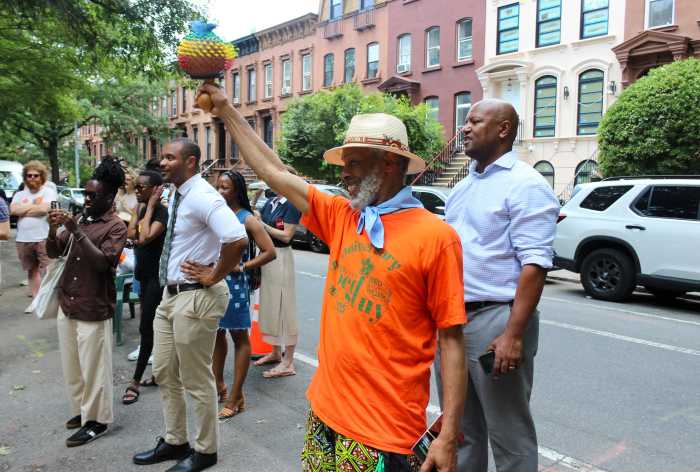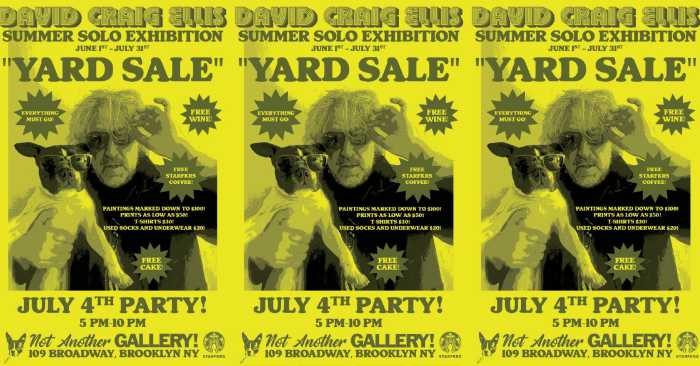Canarsie’s garden is a-Maize-ing, and Downtown’s is a dud!
Corn planted at E. 91st Street between Avenues L and M by artist Christina Kelly is now a lush Eden ready to bear fruit — in this case, grain — while its upstart sister garden in Boerum Hill is officially a dust bowl — despite bursting on the scene like gangbusters earlier this year.
Last week, Kelly picked her first ear of Lenape blue corn from Carnasie.
“I pulled back the husks and found gorgeous, dazzling deep blue kernels,” she wrote on her blog at brooklynmaizefield.blogspot.com. More are expected in the weeks to come.
In the latest example of slow-and-steady winning the race — and more proof that southern Brooklyn is superior to the so-called “Downtown” neighborhoods — the Canarsie’s crops have officially outlasted the upstart Boerum Hill field.
“This garden in Canarsie was so hard to get off the ground,” Kelly wrote. “The garden on Smith Street, on the other hand, took off in a flash. But the Boerum Hill garden burned brightly … but it’s winding down early. The squash and beans never got off the ground. Canarsie … is just hitting its stride.”
Kelly attributed the initial success — and ultimate demise — of the Boerum Hill plot to the 12 hours of direct sunlight it received during what has been the hottest summer on record.
At press time, Kelly was unavailable for comment, but on her blog she speculated that one big difference is that the Canarsie plot, which stands near Public School 115, is shaded for part of the morning.
“It’s also watered in the early morning. And because the sun comes over the garden around 11 am, the ground stays damp after a water and the moisture doesn’t evaporate.”
The gardens were based on the so-called “three sisters” of traditional farming — corn, beans and squash — which enjoy a symbiotic relationship. The project, called Maize Field, aims to stir thoughts about the nature of change and our ever-morphing relationship to the land.
“If the corn doesn’t grow and something is wrong with this spot of land — which historically was greatly valued by the Indians for its agricultural use — it may be interesting to work on that line of inquiry,” Kelly said.
To learn more about the project, go to www.brooklynmaize.org.






















